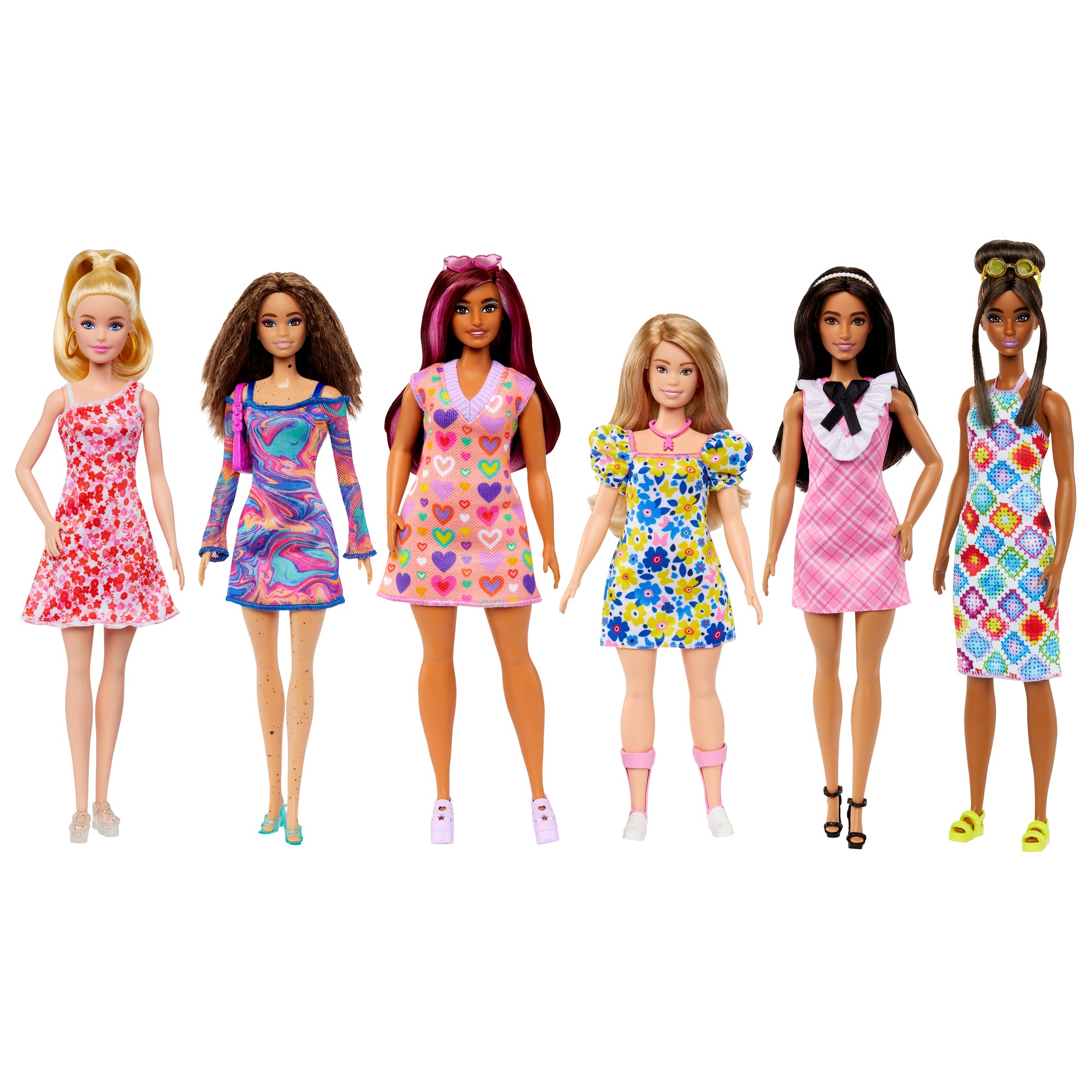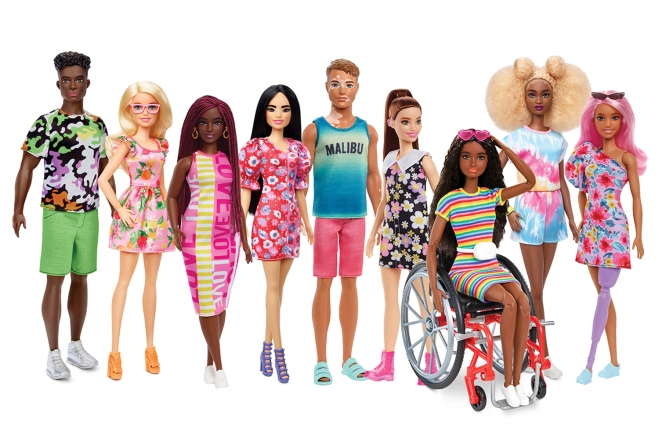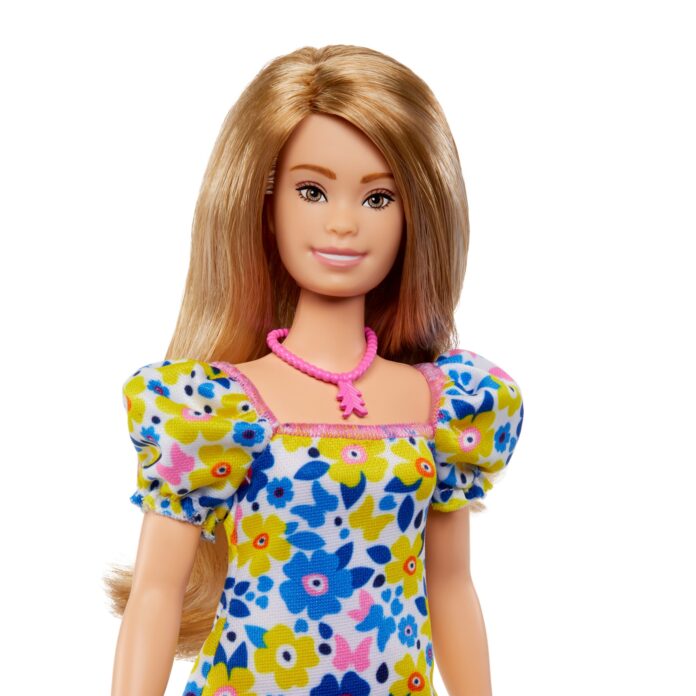The toy aisle just got more inclusive! That’s because Mattel, Inc. added a brand new Barbie with Down syndrome to its diverse, ever-growing collection. The toymaker announced that it created the new doll with the disability in hopes that even more children could connect with the Barbie brand. The Barbie doll with Down syndrome, Mattel says, is meant to inspire all children — with and without disabilities — to tell more stories through play.
“As the most diverse doll line on the market, Barbie plays an important role in a child’s early experiences, and we are dedicated to doing our part to counter social stigma through play,” said Lisa McKnight, Executive Vice President and Global Head of Barbie & Dolls, Mattel. “Our goal is to enable all children to see themselves in Barbie, while also encouraging children to play with dolls who do not look like themselves. Doll play outside of a child’s own lived experience can teach understanding and build a greater sense of empathy, leading to a more accepting world. We are proud to introduce a Barbie doll with Down syndrome to better reflect the world around us and further our commitment to celebrating inclusion through play.”
Creating Mattel’s Barbie Doll with Down Syndrome
To ensure that the Barbie doll accurately represents a person who has Down syndrome, Mattel collaborated with the National Down Syndrome Society (NDSS). As a human rights nonprofit, the NDSS empowers individuals with Down syndrome and their loved ones by providing resources, driving policy change and engaging with local communities. During the design process, NDSS provided essential guidance to establish the doll’s sculpt, clothing, accessories and packaging.

“It was an honor working with Barbie on the Barbie doll with Down syndrome,” said Kandi Pickard, NDSS President and CEO. “This means so much for our community who, for the first time, can play with a Barbie doll that looks like them. This Barbie serves as a reminder that we should never underestimate the power of representation. It is a huge step forward for inclusion and a moment that we are celebrating.”
According to Mattel, decisions during the creation phase were purposeful and well-intentioned. For example:
- In regard to the sculpt: This doll introduces a new face and body sculpt to be more illustrative of women with Down syndrome, including a shorter frame and a longer torso. The face sculpt features a rounder shape, smaller ears and a flat nasal bridge, while the eyes are slightly slanted in an almond shape. The doll’s palms even include a single line, a characteristic often associated with those with Down syndrome.
- In regard to the fashion & accessories: The doll’s puff-sleeved dress pattern features butterflies and yellow and blue colors, which are symbols and hues associated with Down syndrome awareness and support. The doll’s pink pendant necklace with three upward chevrons represents the three copies of the 21st chromosome, which is the genetic material that causes the characteristics associated with Down syndrome. The three chevrons, or arrows, are a symbol that unites the Down syndrome community and are meant to represent “the lucky few” who have someone with Down syndrome in their life.
- In regard to orthotics: The Barbie doll with Down syndrome also wears pink ankle foot orthotics (AFOs) to match her outfit and her sneakers tout an adaptive zipper detail. Some children with Down syndrome use orthotics to support their feet and ankles. NDSS supplied a box of orthotics to serve as real-life inspiration for the toy version.

Why this Barbie Doll with Down Syndrome Matters
Children’s early experiences help shape their thoughts and perceptions – and Mattel believes that the Barbie doll collection can play an important role in this process. The company explains that when a child plays with a Barbie, they play out their dreams and, perhaps, imagine they can be anything. Doll play has an incredible purpose during key developmental stages as it may help set children on a course for success by allowing them to develop empathy – fueling social skills needed to excel as they imagine their futures with an equal playing field, according to analysis by Cardiff University. Thus, the Barbie doll with Down syndrome allows more children to see themselves in Barbie as well as the world around them, which can help foster a sense of inclusivity.
Barbie is the most inclusive doll line on the market, says Mattel. The collection includes over 175 looks offering a variety of eye colors, hair colors and textures, body types, disabilities and fashions to tell more stories. Barbie has introduced a doll with vitiligo, hearing aids, a wheelchair-user and other differences. Now, Barbie is continuing to represent global belonging and inclusivity with the full 2023 Fashionistas lineup, which also includes new dolls in a variety of body types including a Barbie doll wearing braces and a Ken doll with a prosthetic leg.
The Barbie doll with Down syndrome will retail, in stores this Summer and Fall 2023, for $10.99. And it’s impact, especially for children with disabilities, could be priceless!






